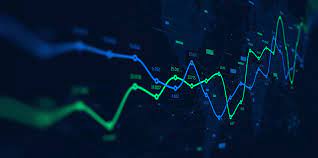The foreign exchange (FX) market, often referred to as forex, represents the heartbeat of global finance. It is the largest and most liquid financial market, facilitating the exchange of currencies around the clock. In this article, we will delve into the intricacies of the FX market, exploring its structure, key participants, influencing factors, and the pivotal role it plays in the global economy.
Structure of the FX Market
- Decentralized Nature: Unlike traditional stock markets, the FX market operates in a decentralized manner. There is no central exchange; instead, trading occurs over-the-counter (OTC), connecting a vast network of banks, financial institutions, corporations, and individual traders.
- Currency Pairs: Currencies are traded in pairs, reflecting the exchange rate between two currencies. Major currency pairs involve the most widely traded currencies, including the US Dollar (USD), Euro (EUR), Japanese Yen (JPY), and British Pound (GBP).
Key Participants in the FX Market
- Retail Traders: Individual traders, often referred to as retail traders, form a significant segment of the FX market. The rise of online trading platforms has democratized access, allowing individuals to participate in currency trading with relatively small amounts of capital.
- Institutional Traders: Large financial institutions, such as banks, hedge funds, and central banks, play a pivotal role in the FX market. Their substantial trading volumes can influence currency prices significantly.
- Central Banks: Central banks participate in the FX market to implement monetary policies, influence interest rates, and manage currency stability. Central bank interventions can have a profound impact on currency values.
Influencing Factors in the FX Market
- Economic Indicators: Economic data, including Gross Domestic Product (GDP), employment figures, and inflation rates, can impact currency values. Traders closely monitor economic indicators to anticipate potential market movements.
- Interest Rates: Central banks’ decisions on interest rates are a key driver in the FX market. Higher interest rates can attract foreign capital, leading to currency appreciation, while lower rates may lead to depreciation.
- Political Stability and Geopolitical Events: Political stability is crucial for currency valuation. Geopolitical events, such as elections, trade tensions, and conflicts, can introduce volatility and uncertainty to the FX market.
Trading Sessions in the FX Market
- Asian Session: The FX market operates 24 hours a day, starting with the Asian session. Major financial centers, including Tokyo, Hong Kong, and Singapore, contribute to liquidity during this period.
- European Session: The European session, centered around London, is known for high liquidity. This session often sees increased volatility, especially during the overlap with the Asian session.
- North American Session: The New York session is the final major session, with significant trading activity. The overlap with the European session contributes to heightened volatility.
Technology in the FX Market
- Electronic Trading Platforms: The advent of electronic trading platforms has transformed the FX market. These platforms provide real-time quotes, advanced charting tools, and order execution, making trading more efficient and accessible.
- Algorithmic Trading: Algorithmic or algo trading involves using computer algorithms to execute trades at high speeds. Algo trading has become prevalent in the FX market, contributing to liquidity and price efficiency.
Risk Management in the FX Market
- Leverage: While leverage can amplify profits, it also increases the risk of significant losses. Traders should use leverage cautiously and implement risk management strategies to protect their capital.
- Stop-Loss Orders: Setting stop-loss orders is a common risk management technique in the FX market. These orders automatically close a position at a predetermined level to limit potential losses.
Conclusion
The FX market, with its vast scale, liquidity, and constant activity, stands as a dynamic force in the global financial landscape. Understanding its structure, key participants, influencing factors, and the role of technology is essential for traders and investors seeking to navigate this complex market. Whether you are an institutional player managing substantial volumes or an individual retail trader, the FX market offers a diverse and exciting arena for financial opportunities, underscored by its continuous evolution and global significance.







